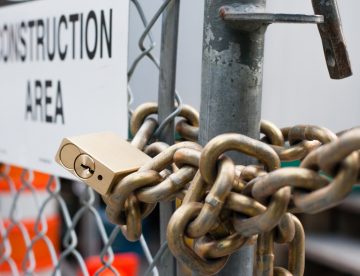
According to the Health and Safety Executive (HSE), almost one in five deaths in the construction industry involves roof work, the most common causes being falls from roof edges or through fragile surfaces.
The saddest thing about this statistic is that a great many of these accidents could have been avoided through the implementation of proper safety measures – using the correct equipment and ensuring workers receive adequate information, instruction, training and supervision. Take a moment to read this week’s blog for some key safety tips.

As more than 400 tax workers join other professions in the recent wave of UK strike action, construction workers have reported serious issues in their attempts to communicate with the HMRC construction Industry Scheme (CIS).
Although online verification doesn’t appear to have been affected, callers to the CIS helpline have faced long delays with some reporting being cut off during their attempts to speak to someone. Find out more in this week’s blog.

While some of the mobile apps we download end up doing little but take up space on our phones or tablets, others are revolutionising the way we live and work.
Right now, there are a great many mobile apps that are proving particularly useful for those working in the construction industry – supporting people by making every-day tasks simpler, improving efficiency in working practices and raising professional standards higher than ever before. In this week’s blog, we’ve got a rundown of just some of the apps available.

It’s fairly common for construction workers to question whether they need to follow an exercise regime, considering the fact that they already do a lot of physical activity in their daily work.
While it’s true that construction work involves a mix of low-intensity and heavier physical activity that might seem like a good workout, research has shown this doesn’t match the numerous health benefits that come from recreational physical activity. In this week’s blog, we’re taking a closer look at this topic.

Over the past few months, we’ve witnessed a race in the launch of Artificial Intelligence (AI) technology that has been trained to interact with humans in a conversational way.
Natural language models like Open AI’s ChatGPT and Google’s Bard can produce pieces of creative writing, translate copy, summarise lengthy texts, access vast amounts of data to answer queries and have a human-like conversation. Whilst experimenting with these technologies can be both useful and fun, this has got us wondering whether AI might soon be taking on other creative work such as designing a building (or perhaps it is already)? Take a look at what we found out in this week’s blog.

At least two online media outlets have just published articles about Sheriff Construction, recognising our company as one of the leading installers and suppliers of flat-roofing systems and brickwork services in the UK.
Both the UK Herald and London Journal picked up the story of our 17 years in the industry and recent success, noting the national recognition our company has gained for delivering exceptional work on commercial and residential projects and for our pursuit of innovation. Read the full story in this week’s blog.

When working as part of a team, it is almost inevitable that, at some point, you’ll experience a situation involving conflict – a difference of opinion, a misunderstanding or possibly an outright argument with a colleague.
This is often because, although you may be working towards a shared goal, most teams are made up of people from diverse backgrounds with different personalities, perspectives and opinions. However, conflict doesn’t have to be seen as wholly negative as, if it’s handled well, it can actually be an opportunity for healthy debate, personal growth and support innovation. See if you can achieve this by following our six conflict resolution tips.

Research shows that nearly four out of five tradespeople in the UK have experienced tool theft with the estimated cost to the industry coming in at a staggering £2.8 billion.
Because the victims of tool theft are often self-employed, the impact of their individual losses on them, their families, livelihoods and mental health can be devastating. However, the criminals targeting construction sites and trade vans rarely stop to think about such things and so it’s vital that construction companies prioritise and put every effort into site security. In this week’s blog, we’ll look at how big this problem has become and what you can do to protect your site.

In a single year, the UK generates 67.8 million tonnes of non-hazardous Construction and Demolition waste, a figure that represents 62% of the nation’s total waste output.
This waste is made up of all kinds of products – concrete bricks, tiles, ceramics, insulation, wood, glass, plastic, bituminous mixtures, cement, gypsum, paints, varnishes, soil, stones, coal, tar, cables, pipes, adhesives and sealants – to name a few!
While much of this is recovered, taking action to reduce construction waste has proven to be good, not only for the environment, but also for business. Keep reading to find out more…

